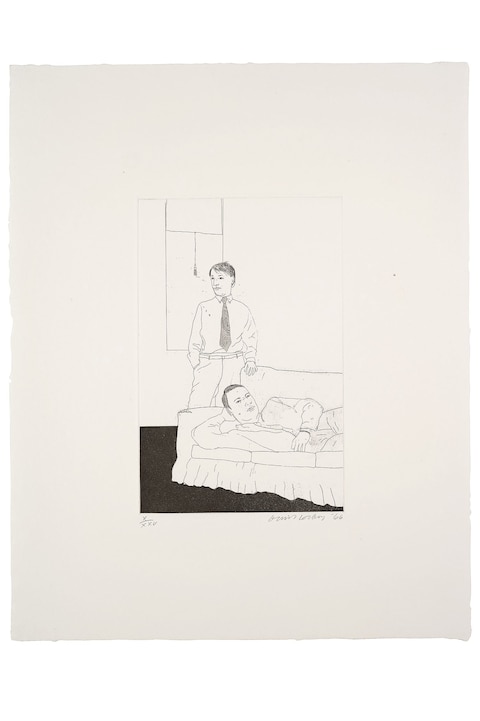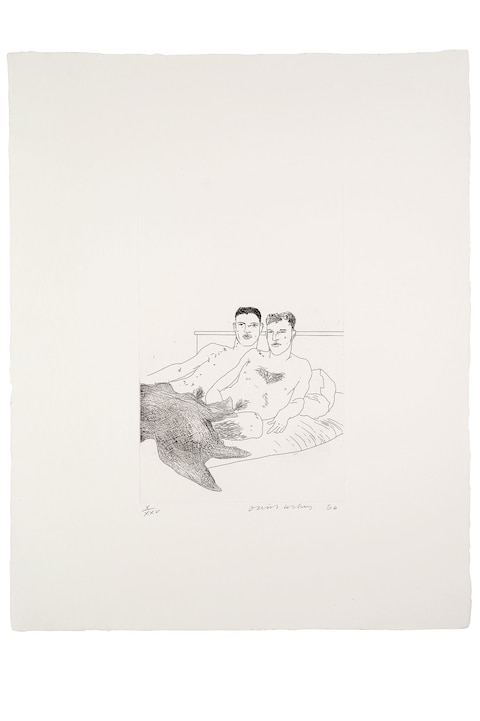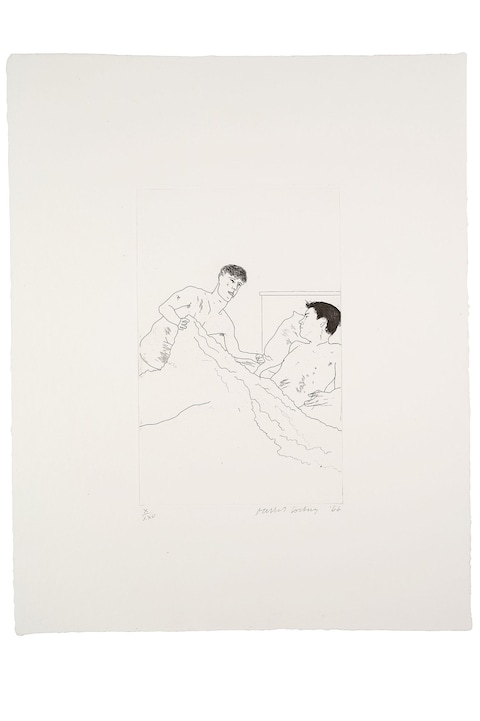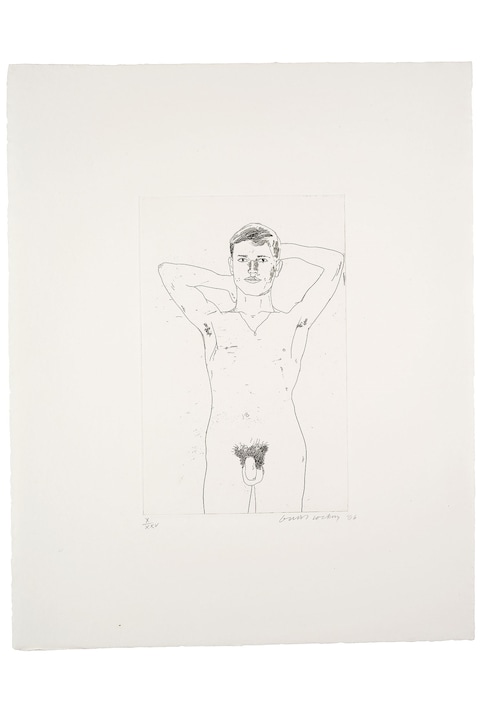For AnOther Magazine in 2017, the designer listed the texts that have had a profound impact on his life and work, all written by exports of his native Ireland – and still influencing his collections today
“Irish people are very good at telling stories. Every country has an export, and I think it’s quite remarkable for such a small country to have had so many great writers come out of it. Irish literature is second to none, and for me that’s quite a proud thing. The writers I’ve chosen for Document – Samuel Beckett, James Joyce, Seamus Heaney, William Butler Yeats, Flann O’Brien and Bram Stoker – are titans of literature and they each changed literature in their own way.
There’s a romantic aspect to these writers that I feel quintessentially sums up Ireland somehow. Many of them left of course. Oscar Wilde famously left. When I’m in Paris, I stay in the Left Bank hotel that was his last address. Joyce also went to Paris and ended up in Switzerland. Beckett went to Paris and then to the south of France. But I think there’s something in that too… Ireland is a country that never leaves you, no matter where you go.
These Hockney etchings are my favourites, they’re just beautiful. They were inspired by a suite of poems by the Greek poet Constantine Cavafy, who Hockney loves – he admitted he once stole a book of his poems from the library because it was out of print. Hockney had visited Alexandria, where Cavafy lived, but these sketches were actually based on a trip Hockney took to Beirut in 1966, carrying his sketchbook around and soaking up the bohemian atmosphere and mood of the city.” – Jonathan Anderson

Endgame by Samuel Beckett
“I studied this play when I was at drama school in the US, and I’ve seen it so many times since. It’s an incredible, complex piece and it was Beckett’s favourite. In drama school I learnt two Russian theatre techniques – the Stanislavski method and the Brecht technique. They’re two different ways of approaching performance, and, basically, Brecht is about playing the character, Stanislavski is about being the character. I think Endgame is like a hybrid of both those approaches, because it’s nearly all spoken outwards, which is very difficult, and it’s also quite physical too. Beckett is someone I continually look to, he was very lateral in the way he approached everything. He is, like James Joyce, a male icon of Irish literature. They both had a kind of grumpy persona, and weirdly are linked – Beckett dated Joyce’s only daughter Lucia, who was a dancer.”

Ulysses by James Joyce
“Ulysses completely changed the way I saw literature. It’s a difficult book that took me about five years to read – being dyslexic didn’t help. It’s one of those books I kept reading and reading to get my head around. I love that Joyce didn’t actually write it in Ireland; he started it in Zurich and finished it in Paris. So there’s a lot of correspondence from him as he was working on it, writing to people in Ireland to find out exactly how many steps it would take to walk to such-and-such a place in Dublin. I remember once being in a rare bookshop in Dublin and seeing a first edition of Ulysses in the turquoise wrapper and handmade paper, published by Shakespeare and Company in 1922. Just as an object it looked quite amazing, like the flimsiest telephone book, made even bigger-looking because it was printed in a square format. I chose to print the first and last page here because I’ve always loved the opening – how it jumps straight in without any precursor. The vocabulary and rhythm is quite masculine, and then Molly Bloom’s final monologue feels quite feminine, it has so many visual, evocative words and such emotional impact. So if you haven’t had the chance to read the entire book, the first and last pages might be a good place to start.”

Digging by Seamus Heaney
“Digging is my mother’s favourite poem. Doing GCSE English I had to learn it – and when you have a mother who’s an English teacher, you sort of have no choice. I remember as a child, going with my mother to a poetry festival in the village of Bellaghy, where Heaney was originally from, and seeing him talk about it. We met him, he signed a book for us and he was incredibly grumpy, but I suppose that comes with the territory. I think that’s why Digging feels very personal to me – it comes from my area. I grew up in The Loup, County Londonderry, which is about ten miles from Bellaghy.
At school you learn all the technical reasons why Digging is a great poem – the onomatopoeias and alliteration and similes and so on, which is all very true, but there’s something else, something you can smell in this poem. And because I learnt it at school, it has stuck with me. I feel like every generation has that poem they had to learn – my mother always remembers Wordsworth’s daffodils poem, I Wandered Lonely as a Cloud, because it was on her school curriculum. In my parents’ house, my mother has a lithograph up of Digging, she’s just obsessed by it. So this one’s for her.”
Easter by William Butler Yeats
“If we’re talking about great Irish writers, I can’t leave out Yeats. There’s so many you could choose but this poem is one of my favourites, written following the Easter Rising in Dublin, memorialising the leaders who lost their lives in the rebellion against British rule.”

At Swim-Two-Birds by Flann O’Brien
“Flann O’Brien was deeply influenced by James Joyce – and Joyce was later a fan of his, in fact At Swim-Two-Birds is supposed to be the last novel Joyce read. It was discovered by Graham Greene when he had a job reading unsolicited manuscripts at a publishing house in London. He recommended it for publication but it only sold about 200 copies when it was first released. Greene, Dylan Thomas and Jorge Luis Borges all championed it, and it’s come to be considered a comic masterpiece. It’s a brilliant Irish novel and a reflection on the Irish novel at the same time, a book within a book. And it has the best title – Swim-Two-Birds is the name of an Irish pub the characters spend time in.”

Dracula by Bram Stoker
“When I got a job with Brown Thomas and moved to Dublin, I remember walking past a red-brick house with a plaque on it that read ‘Bram Stoker, author of Dracula, lived here’. I had to do a double-take because I never knew that an Irish person wrote Dracula. People tend to think it’s American. When I realised Bram Stoker lived on the same street, Kildare Street, that I was living on in Dublin, it took me a few days to process. That’s the reason I wanted to include it here, because Dracula became one of the most iconic stories of the 20th century, over 200 films have been made of it, and his Irishness is often overlooked. The novel has been interpreted as Stoker’s play on late-Victorian fears of immigration – mostly from Eastern Europe at the time – which goes to show how history repeats itself.”
This article originally appears in the Spring/Summer 2017 issue of AnOther Magazine.
